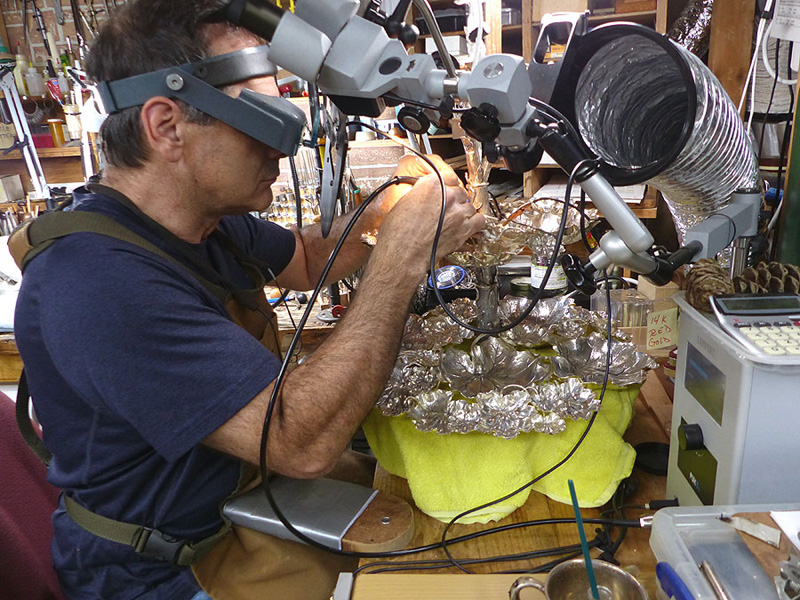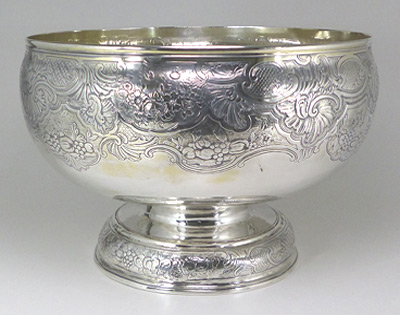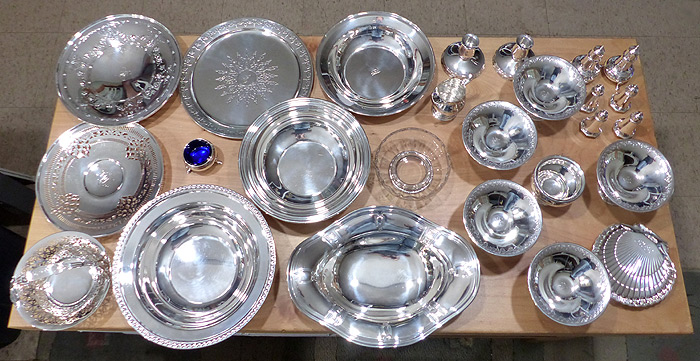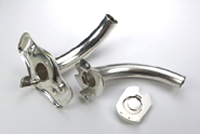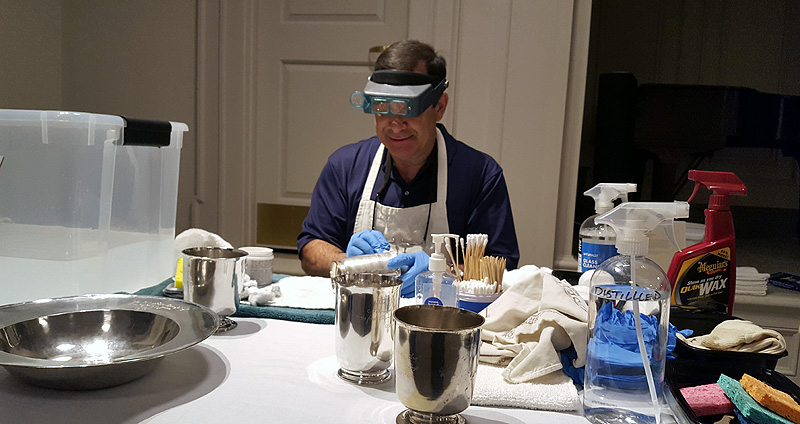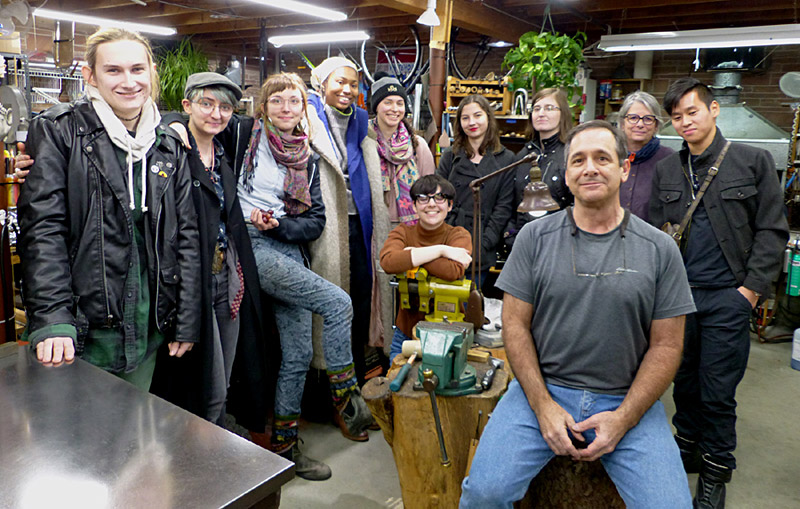|
Objects
I Work On
Holloware (vessels), flatware,
jewelry (including Berlin iron), objet d'art, dresserware, compacts,
vinaigrettes, snuff boxes, cane heads and handles, etc. I have
repaired, reconstructed, and hand polished everything from common
disposal-damaged and dishwasher-dulled flatware to historically
important tankards, tea services, and tureens. (You can see some of
the objects I've worked on here.) I
accept customer work from around the world.
Metals
I Work On
Sterling, coin,
Britannia silver (.9584% fine silver), and all other solid silver
alloys (.875, .800, etc.), solid gold alloys (18k, 14k, 10k), pewter,
mixed metals, fused plate
(commonly known as Sheffield plate).
Depending on what
your object requires, I use one or more of the following methods: |

